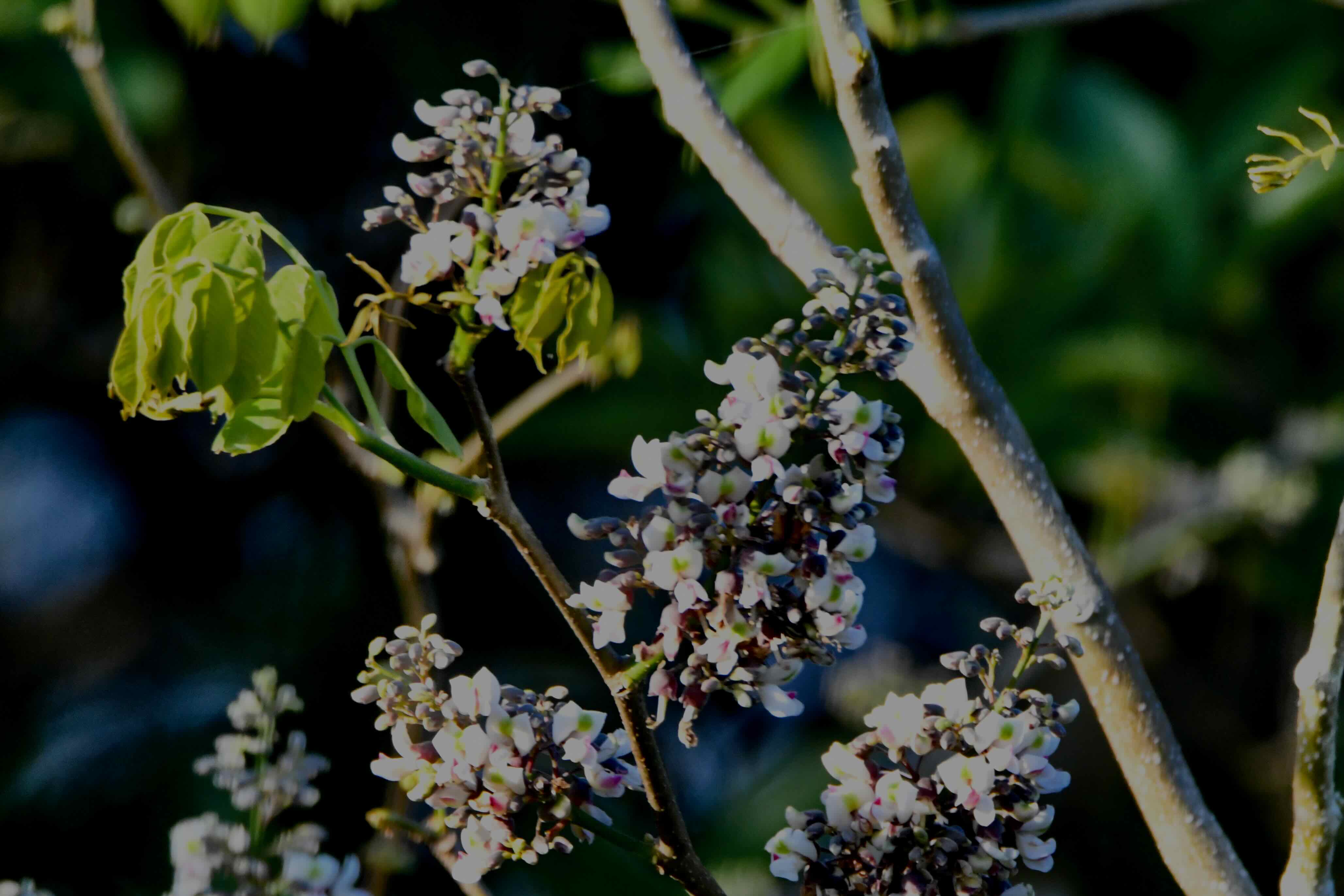
Jamaica dogwood, photographed at Southern Glades Environmental Area, Florida City, Miami-Dade County, in April 2025.
Jamaica dogwood, Piscidia piscipula, is a beautiful tree when in bloom. But it’s also a tree we humans find useful for a variety of reasons.
It’s a natural chemical factory, producing substances used to stun and catch fish and as cures for a variety of conditions that plague us humans. It also gets high marks for the quality of its wood.
And of course, there’s its outstanding looks, which make for an outstanding landscaping tree.
Jamaica dogwood is a Florida native found in a handful of counties in the southern end of the Peninsula: Miami-Dade, Monroe, Collier, Lee, Sarasota, Pinellas and Hillsborough. The Institute for Regional Conservation considers it secure in South Florida.
Jamaica dogwood’s native range also extends through the Bahamas and other parts of the Caribbean, Mexico and Central America.
We should note here that Jamaica dogwood is not related to the dogwood tree found throughout parts of the eastern United States, including Northern Florida. That’s American dogwood, Cornus florida. The two trees are in different taxonomic families.
Now back to our regular programming.
Jamaica dogwood is a moderate to fast growing tree, typically hitting 25 to 35 feet, but can be as tall as 60 feet. It has an irregular crown. It also can be shrubby.
The leaves are compound, dark green above, pale green underneath and arranged alternately along the branches. The bark is gray and thin. Jamaica dogwood is a deciduous tree, dropping its leaves before or during its flowering season April into June.
The flowers themselves are white, with a tinge of pink or lavender, and appear in large clusters. The fruit is a papery seed pod that appears July into September. It turns from green to light brown as it matures.
It is a larval host to the hammock skipper, cassius blue and fulvous hairstreak butterflies. The blooms attract bees, butterflies and other pollinators looking for a sweet meal.
Jamaica dogwood is mostly found in coastal areas; favorite habitats include hammocks, shell middens and the pine rocklands of Miami-Dade and Monroe counties. It grows in places with full sun.
Jamaica dogwood is a tough tree, drought resistant once established and can tolerate some saltwater intrusion, an important feature in coastal areas.
As we noted above, Jamaica dogwood produces some serious chemicals, notably piscidone, piscerythrone, ichthynone and rotenone. If you’re an organic gardener, you might recognize rotenone for its use as a natural insecticide.
Those chemicals (and myriad others) are extracted from the root bark of Jamaica dogwood. It’s now illegal in Florida and the Bahamas and perhaps in other places, but at one time fishermen would harvest the root bark, add leaves from the tree, crush them together and place the concoction in a bag and toss it in water. The constitute chemicals would leach through the water, stun fish and make it easy to catch them.
The practice is the source of two of Jamaica dogwood’s other common names: Florida fish poison tree and fish-fuddle tree.
If you google Jamaica dogwood, you’ll see it sold for medicinal purposes in various forms — everything from tinctures to the root bark itself.
It’s been touted as a sleep aid, to reduce anxiety, relieve nerve pain, migraines, menstrual pains, muscle spasms and more. Some of the constituent chemicals have been studied for their effectiveness in treating various conditions. There’s still questions about how well Jamaica dogwood works and, importantly, how safe it is to use. Natural does not mean it’s harmless whether it’s Jamaica dogwood or any other product.
One website called The Naturopathic Herbalist says this about Jamaica dogwood: Toxicity: It is narcotic and should not be used in excess of the prescribed dosage range. May cause nausea. If given in high enough doses, piscidia will cause bradycardia and if given in toxic amounts will cause convulsions, general paralysis, and death.
You’ll also see Jamaica dogwood wood for sale on the internet. The wood is highly regarded for various woodworking projects, including making bowls, ornaments and furniture. It’s highly resistant to decay.
Taxonomic note: You might come across Piscidia erythrina as the binomial name for Jamaica dogwood. It is obsolete and no longer accepted per the Integrated Taxonomic Information System.
Jamaica dogwood is a member of Fabaceae, the pea family.
Southern Glades Wildlife and Environmental Area


